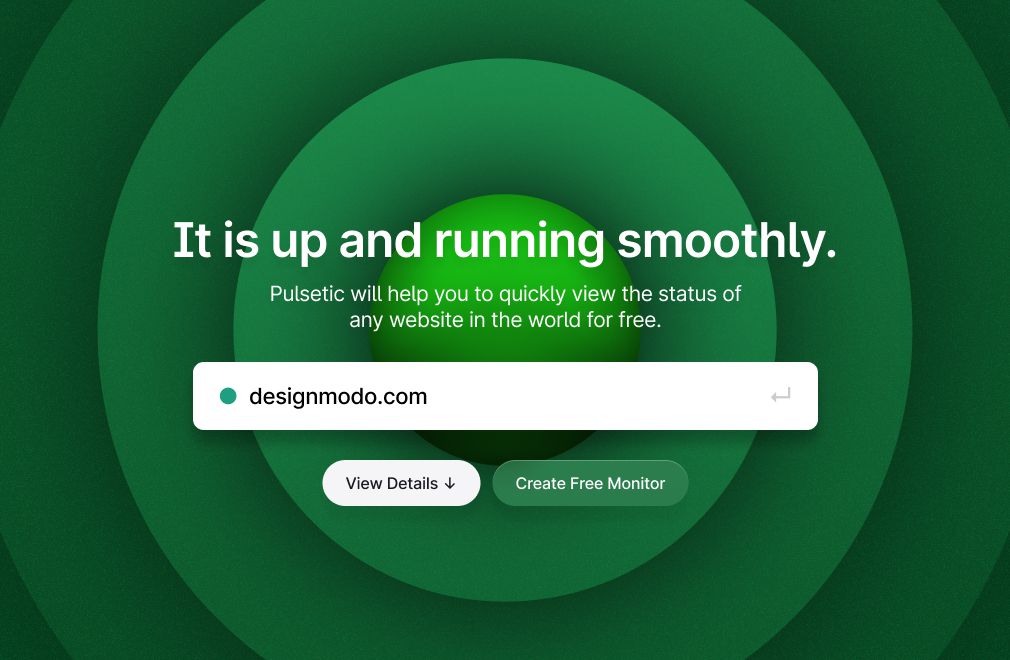Is the website down?
Check your website from 15 global locations and find out if it's down now. Take all the guesswork out of knowing if your website is down.
Check your website from 15 global locations and find out if it's down now. Take all the guesswork out of knowing if your website is down.


Monitor from around the world
Pulsetic's enhanced monitoring includes a real-time website status. Our expanded global data centers ensure redundancy and localize outages, providing precise insights into your website's availability and performance around the world.

Get alerts the way you prefer
Get real-time website downtime notifications delivered instantly via email, SMS, Slack, and more. Stay informed, take swift action, and minimize disruptions for a prompt recovery, ensuring your website is never down for long.

Make personalized Status Pages
Create customized public status pages to keep customers informed about your website's performance. Personalize colors, logos, and domain links to match your brand. Share real-time updates with email subscribers to address any concerns about website downtime.
To determine if your website is down, you can use various online tools or services that offer website monitoring. Simply enter your website's URL, and the tool will check its status in real-time. If it's experiencing downtime or issues, you'll be promptly notified.
Websites can go down for various reasons, including server outages, hosting provider issues, DNS problems, coding errors, traffic spikes overwhelming the server, cyberattacks, or maintenance activities. Identifying the root cause is crucial to resolving the downtime issue effectively.
Regular website status checks are essential for staying proactive. For critical websites, checking every few minutes may be necessary, while less critical sites may be checked every 10 to 15 minutes. Use a website monitoring service with customizable check intervals to suit your needs.
Yes, temporary downtime can occur due to routine maintenance, server upgrades, or even minor technical glitches. However, it is crucial to address prolonged or recurring downtime to prevent negative impacts on user experience and SEO rankings.
Minimizing website downtime requires proactive measures, such as choosing a reliable hosting provider, maintaining regular backups, monitoring website performance, promptly addressing technical issues, and implementing robust security measures to prevent cyberattacks.
In some cases, warning signs like slow loading times, increased error messages, or unusual traffic patterns may precede website downtime. Monitoring your website's performance regularly helps identify such signs and take corrective actions in advance.
Yes, many website monitoring services offer instant notifications via email, SMS, or mobile apps when your website experiences downtime or performance issues. This ensures you are alerted promptly and can take necessary action.
Absolutely! Use personalized public status pages to communicate with your customers during downtime. These pages display a current status, cause of the issue, and updates on the resolution progress, ensuring transparency and reducing customer frustration.
Yes, prolonged downtime can negatively impact an SEO ranking. Search engines prefer websites that are consistently available and perform well. Frequent or extended downtime may lead to search engines lowering your site's ranking in search results.
Yes, some website monitoring tools allow you to access historical data, which helps identify patterns and recurring issues. Analyzing this data helps you make informed decisions to improve your website's overall uptime and performance.
Stay online, all the time, with Pulsetic's uptime prime. Try Free
Made by Designmodo
MONITORING
SERVICE
COMPARE
ACCOUNT